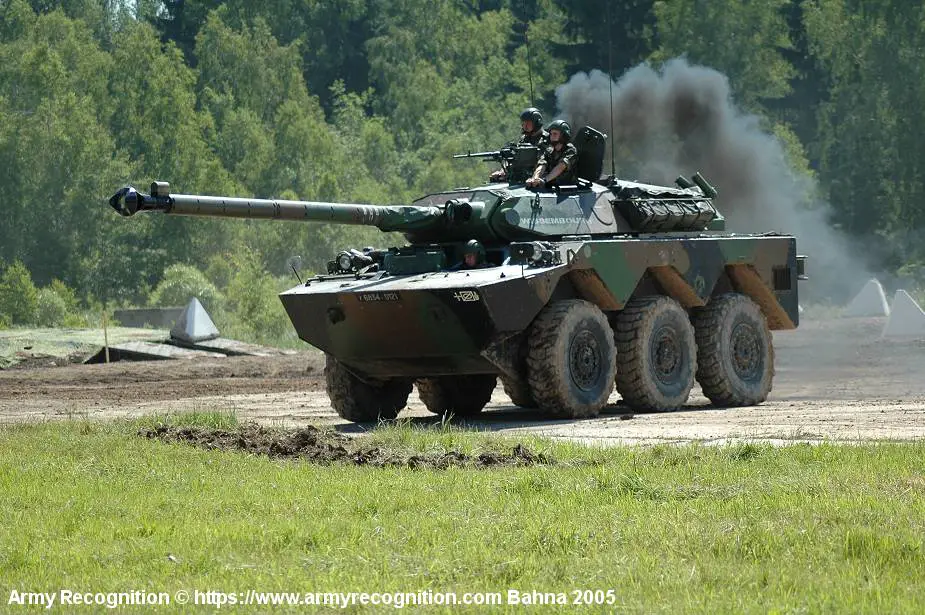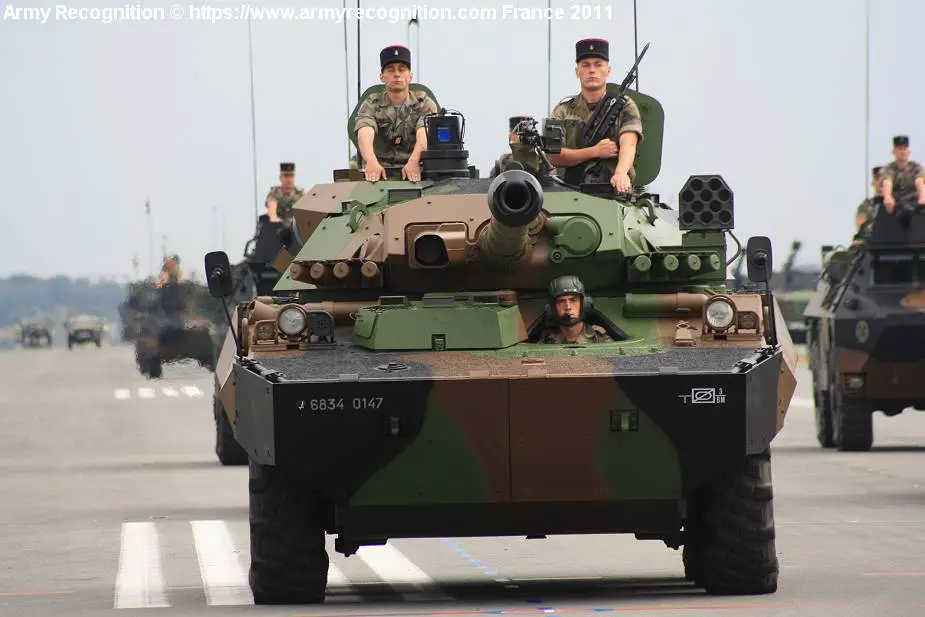- Army
- Conflicts in the world
- Israel - Iran conflict 2025
- Pakistan - India Conflict 2025
- Russia Ukraine War 2022
- Libya conflict day by day
- HAMAS - Israel War 2023
- Operation Serval in Mali French Army
- Sangaris operation Central African Republic
- Sangaris opération militaire République Centreafrique
- Ukraine - Russia conflict
- Syria conflict news
- Defence & Security Industry Technology
- Armies in the world
- Analysis Defense and Security Industry
- Conflicts in the world
- Navy
- Air
Analysis: What are combat capabilities of French AMX-10RC for Ukraine against Russian tanks
Analysis: The AMX-10RC combat vehicle that France will supply to Ukraine is not a main battle tank (MBT), but it offers several advantages compared to MBTs due to its design as a wheeled reconnaissance and fire support vehicle. There is no information about the variant of the AMX-10RC that France will provide to Ukraine. The AMX-10RCR is a modernized variant of the original AMX-10RC offering more mobility, firepower, and protection.
Follow Army Recognition on Google News at this link

The French AMX-10RC is not a Main Battle Tank but it will be able to fight Russian MBTs such as the T-72 and T-80s. (Picture source Army Recognition)
In terms of mobility, the AMX-10RC has a 6x6 wheel configuration, allowing it to traverse various types of terrain more easily and quickly than most tracked MBTs. Its top speed of around 85 km/h on roads and a range of approximately 800 km make it more agile and able to rapidly deploy to different locations.
As far as tactics are concerned, the AMX-10RC functions as a reconnaissance vehicle, enabling it to perform various missions such as scouting, target acquisition, and providing fire support to other units. This versatility allows it to serve multiple purposes on the battlefield, in contrast to MBTs which are primarily focused on engaging enemy armor.
Due to its smaller size and lighter weight compared to MBTs, the AMX-10RC has a reduced logistical footprint. This means it requires less fuel, maintenance, and transportation resources, making it easier and less expensive to deploy and operate. The wheeled configuration and lighter weight of the AMX-10RC make it easier to transport by air, rail, or road compared to heavier MBTs. This capability is advantageous when rapid deployment is required or when operating in theaters with limited infrastructure.
The AMX-10RCR features additional armor protection, including spall liners and armor plates, which improve survivability against small arms fire, artillery fragments, and mines. It is also equipped with a remotely operated weapon station (RWS), allowing the crew to operate the vehicle's machine gun without being exposed to enemy fire.
The mobility of the AMX-10RCR has been improved and the vehicle is equipped with a new powertrain, including a more powerful engine and a new transmission, resulting in better acceleration, speed, and overall mobility. The vehicle is also equipped with modernized sensors, including a new thermal imaging system for enhanced night vision capabilities. It also features an upgraded communication and battle management system for improved situational awareness, coordination with other units, and faster decision-making.

The AMX-10RCR is an improved version of the AMX-10RC offering more mobility, firepower, and protection. (Picture source Army Recognition)
The AMX-10RC is armed with a 105 mm F2 rifled gun as its primary armament, capable of firing Armor-Piercing (AP) and High-Explosive Anti-Tank (HEAT) rounds. While this weapon was considered potent when the vehicle was first introduced in the early 1980s, advancements in modern tank armor have diminished its effectiveness against contemporary main battle tanks (MBTs).
The AMX-10RC is not designed to engage main battle tanks (MBTs) directly, its firepower can still pose a threat to older or less advanced tanks, such as the Soviet-era T-72 and T-80. Depending on the specific variant and armor configuration of the T-72 and T-80, the 105 mm F2 gun might be able to penetrate the tanks' side or rear armor, especially when firing AP rounds. However, penetrating the frontal armor would be more challenging due to its increased thickness and the use of composite materials.
The AMX-10RC to fire HEAT rounds can also be an advantage against the T-72 and T-80, as these rounds can inflict damage through their shaped-charge effect, regardless of the armor thickness. However, the effectiveness of HEAT rounds can be reduced by reactive armor or other countermeasures, which are present on some variants of the T-72 and T-80.
The AMX-10RC's fire control system, which includes a laser rangefinder, day/night optics, and a ballistic computer, can help improve the accuracy of the 105 mm gun. Engaging the T-72 or T-80 from longer ranges or exploiting their weaker armor areas could improve the chances of a successful penetration. Due to its role as a reconnaissance and fire support vehicle, the AMX-10RC should avoid direct engagements with enemy MBTs whenever possible. Instead, it can use its mobility and flexibility to support friendly forces, provide intelligence, and exploit enemy weaknesses. In a tactical situation where the AMX-10RC has the element of surprise or can engage the T-72 or T-80 from their weaker flanks, it may have a better chance of success.
In conclusion, while the AMX-10RC's armament is not optimized for engaging modern MBTs, it may still pose a threat to older or less advanced tanks like the T-72 and T-80, especially when exploiting their vulnerabilities or engaging from advantageous positions. However, the primary role of the AMX-10RC is reconnaissance and fire support, and it should avoid direct engagements with enemy tanks whenever possible.


























